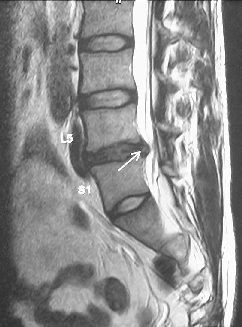Introduction
Diagnosis
Management
Surgery
Introduction
The term “Sciatica” describes pain over the buttock and extends along the posterior thigh and leg. The pain is distributed along the sciatic nerve and the term describes a symptom, not a pathology or a diagnosis. The most common cause is herniated or prolapsed lumbar intervertebral disc with compression of the nerve roots of the sciatic nerve. There are other less common causes including facet joint problem, sacroiliac joint dysfunction and piriformis syndrome.
Diagnosis
Orthopaedic specialists first obtain history from patients about the pattern of pain, any history of low back pain and back injury, any radiation pain and numbness along the thigh, the leg, or even down to the sole; any cough impulse and associated symptoms including urinary or bowel functions. Thorough neurological examination of the lower limb is performed in order to reveal any motor weakness, sensory loss in particular dermatome or abnormal nerve reflexes.
Specific tests – e.g. straight leg raising test – are performed to reveal any nerve root tension signs and to differentiate the origins of the pain.
After clinical assessment a provisional diagnosis of the possible cause and the particular nerve root involvement is made. To confirm the pathology and the neural tissue involved, an MRI scan of the lumbar spine may be necessary.
The most common levels of herniated lumbar disc are between L4 and L5 and L5 and S1 vertebral levels. An MRI scan can show the location, types and extent of the herniation of the intervertebral disc as well as the extent of compression of the neural tissue.

Management
For most people, sciatica responds well to conservative treatment. These include oral medications a course of physiotherapy and exercises.
Oral medications
Painkillers including anti-inflammatory drugs or narcotics may alleviate acute pain. Sometimes, a doctor may also prescribe tricyclic antidepressants or anticonvulsant to reduce the pain.
Physical therapy
Physiotherapy includes exercises that help correct posture, strengthen the muscles that support the back and improve its flexibility. These should be started as early as possible. They can also help reduce the acute pain as well help prevent future recurrence.
When conservative measures don't alleviate pain after a few months, one of the following may be an option for sciatica treatment:
Epidural steroid injections
Corticosteroids suppress inflammation around the irritated nerve, thereby helping to relieve pain. However, the effectiveness of corticosteroids in treating sciatica remains a matter of debate. Studies show that while it can provide short-term symptomatic relief, it may not be a long-term solution. In addition, epidural steroid injection can have side effects. It is not recommended to have repeated injections within a short period of time.
Surgery
Surgery is indicated when the compressed nervous tissue causes significant weakness, loss of sensation of the limb, bowel or bladder incontinence, an increase or persistence of pain in spite of different modes of therapy. Surgical options include decompression with lumbar laminotomy and microdiscectomy.
Recent advancement in endoscopic instruments, microscopic instruments and tubular retractor systems allow surgeons to perform operations through a small incision with good illumination while looking through a microscope (microdiskectomy) or endoscope (percutaneous endoscopic lumbar discectomy).
Dr. SUN, Lun-kit